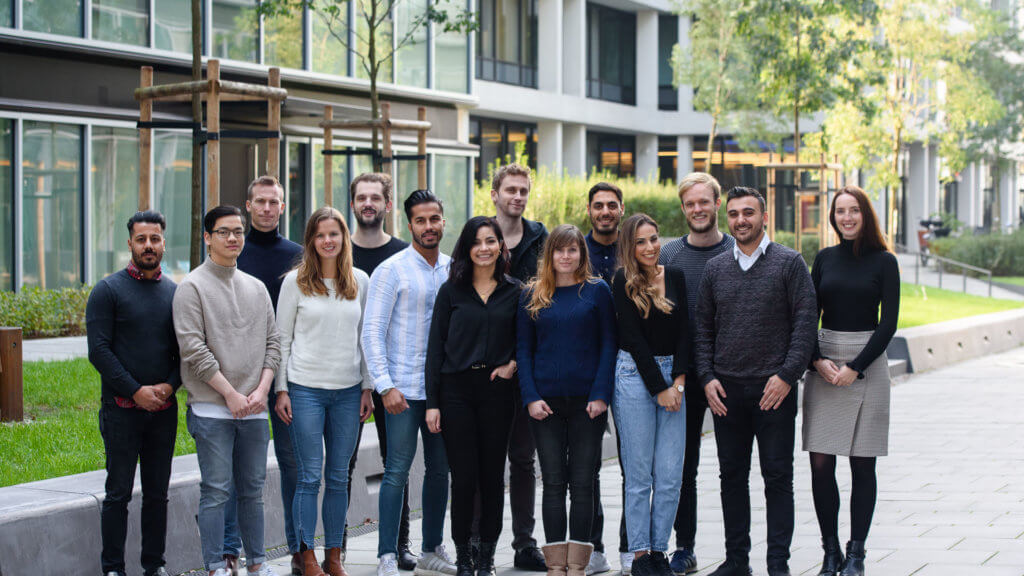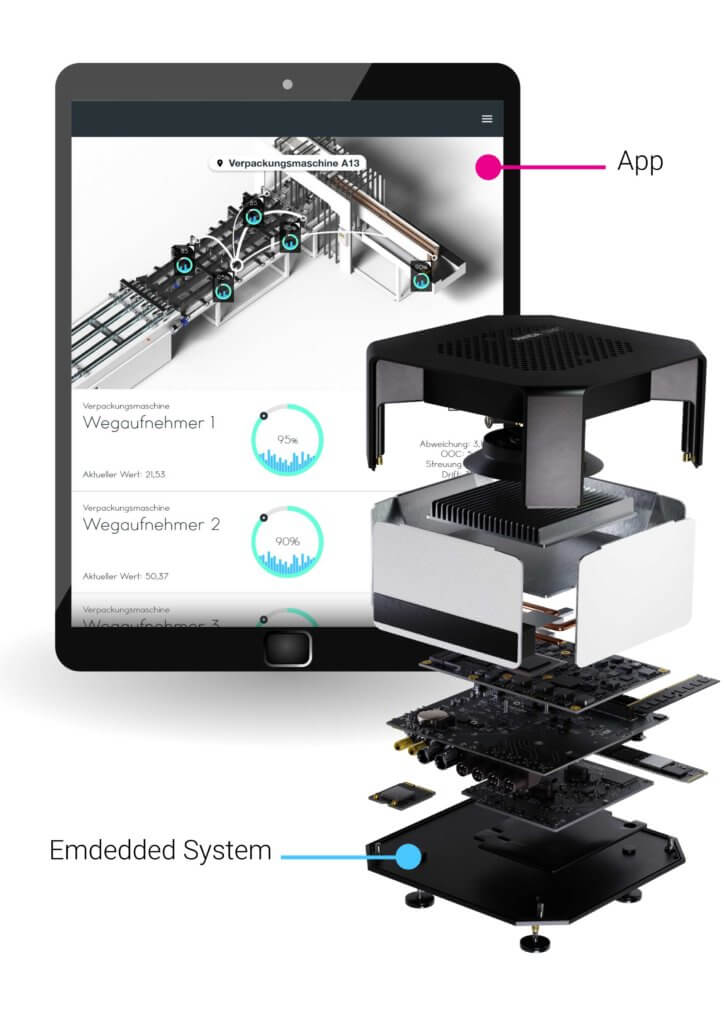Avoiding disturbances in production with artificial intelligence
Judith Hillen
When a production line comes to a standstill or produces a mass of rejects due to a defect, costs quickly skyrocket. PANDA, the Hamburg-based startup, solves problems like these with the help of artificial intelligence: With the PANDA I DRIFT hardware and software solution, the causes of faults can be identified so that they can be prevented at an early stage. "Because we rely on statistical methods instead of physical models, we are able to be more cost-effective than other industrial analytics solutions and thus enter an area where it is possible to monitor the entire production process," says Ingo Kaiser, CEO and co-founder. In an interview with 5-HT he explains how PANDA I DRIFT can also optimize production processes in pharmaceutical and chemical processes and drive digital transformation.
 Panda Team
Panda TeamWhere did the idea for PANDA come from?
When you're in industry, the problems in production just jump out at you: As soon as there is a standstill, panic breaks out, because depending on the industry, a machine hour costs up to 250,000 euros, so it costs a lot of money if the belt stops even for a short time. Problems like these came to the attention of me and my co-founders Michael Welsch and Sabayn Mirakai during our doctoral studies at the Chair for Machine Elements and Computer-Aided Product Development at the Helmut Schmidt University of Hamburg. At the same time, we saw great potential in using artificial intelligence to find solutions to these problems. Our research in this area soon took such concrete form that two years ago we founded our start-up company PANDA out of the university.
Besides machine downtime, what other problems in production does PANDA tackle?
My co-founder Michael likes to tell the following anecdote: Imagine you're working on a plant in a factory, but suddenly there's a malfunction and production stops. In the evening you come home and your girlfriend is in a bad mood. What is the difference between the two situations? You can ask your girlfriend what is wrong and you can do something to make her feel better. This is much more difficult with a system - you cannot simply find out what the problem is and therefore often don't know what to do to fix it. Production plants are complex systems. Changes in the input, changes in the environment or the wear and tear of individual parts can cause processes to become unstable. Even worse than downtime is the mass production of rejects, because this can result in very high costs. But if you understand the causes of the malfunctions, you can prevent them at an early stage and thus not only increase system availability but also reduce the number of rejects.
How can PANDA contribute to improving production processes?
Our software and hardware solution PANDA I DRIFT combines a software framework with the acquisition of machine data, sensor data and visual information through cameras. With our system, we can make production processes transparent and identify the causes of faults. Usually it is the interaction of many different parameters in a particular constellation that leads to a fault. This complexity and this broad data basis can no longer be understood by a human employee. As soon as our system has identified which are the variable influencing parameters, they can be monitored in a targeted manner by means of condition monitoring. Finally, the last area is predictive maintenance: based on statistical methods, we can determine whether a part is likely to break in the next few days, so that preparatory measures can be taken. PANDA I DRIFT thus enables our customers not only to optimize performance in production, but also to safeguard production.
 Panda-DRIFT-Software+Device
Panda-DRIFT-Software+DeviceHow do you differ from other industrial analytics solutions?
Mainly we stand out from the crowd with our root cause analysis. Most systems currently on the market are based on neural networks. They can only analyze errors, but cannot detect their causes. That is why we have built our own software framework that is capable of doing just that. We do not work with physical models, but with statistical calculations. The results are somewhat fuzzier, but the models can be better generalized to different plants and industries because hardly any specific domain knowledge is required. This enables us to achieve a price range in which it is worthwhile for our customers to monitor their complete production. With other industrial analytics solutions, the data basis is often also limited - many systems only work with machine data. We extend this with data from sensors, which can be applied to any hardware, and also use camera systems. Because we produce the sensors ourselves, we reduce costs here too, making the use of sensor technology interesting for the entire factory.
What are your next goals for the further development of PANDA?
Last year we were financed for the first time in a seed round. This year we are working on completing validation in production with our first customers. We are planning to enter the market in autumn. Currently we are mainly active in the automotive, food and plastics industries, but we are looking forward to development partners from new sectors such as the pharmaceutical and chemical industries. Because our system does not have to be modeled specifically for individual industries, we are also able to optimize production processes in pharmaceutical and chemical companies.
In this context, what do you hope to achieve by being part of our Digital Hub?
Although we have not yet implemented any concrete projects with pharmaceutical or chemical companies, we have already received initial customer inquiries. Both sectors are very relevant to us because it is very important for companies in these industries to ensure the high quality of their products. As part of 5-HT, we therefore hope to enter the industry. We would also like to gain more domain knowledge in order to know what specifics need to be considered in terms of production. Conversely, we are confident that our solution can provide great added value for pharmaceutical and chemical companies.
What is your vision for the future of PANDA?
We are pursuing the vision of an autonomous factory. Our system should help employees to better control production. Dull tasks that can just as well be done by a computer should no longer have to be done by humans. We are currently already in talks with plant designers to equip new factories in such a way that complete feedback is possible in the long term.
How well do you see German companies equipped for the digital transformation so far?
In our contact with clients, we experience that engineers in particular are not yet familiar with the topic of AI. Industry 4.0 is a big promise, but many companies do not know where to start in this area in a meaningful way. Here we can provide answers by showing companies that we can solve concrete existing problems in production with AI procedures. In this way we create greater acceptance for digital transformation.
5-HT Chemistry & Health Newsletter
Want the latest tech and industry news, events, relevant info from the ecosystem and more?
Subscribe to 5-HT Newsletter now Subscribe to 5-HT Newsletter now
Become part of the 5-HT Chemistry & Health
Exchange ideas with innovative startups and future-oriented companies in our ecosystem. We look forward to meeting you!